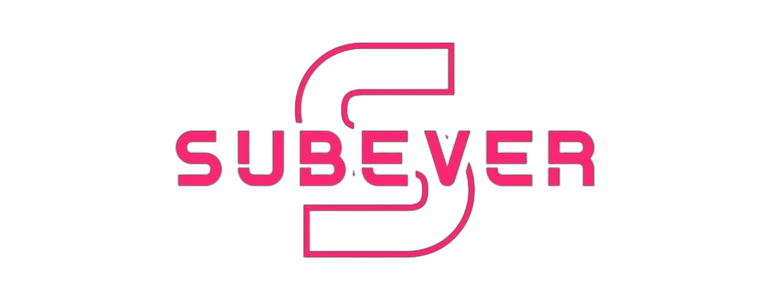Have you ever pondered the concept of spiritual barriers and how they impact our journey towards enlightenment? In Kabbalistic tradition, the term “Chliphot” (also spelled “Kelipot” or “Klippot”) plays a crucial role in understanding these spiritual obstacles. This article explores the meaning, significance, and implications of Chliphot in Kabbalah, offering insights into how they affect spiritual practice and personal growth.
What Are Chliphot?
Chliphot, in Kabbalistic teachings, are spiritual “shells” or “husks” that cover and obscure divine light. The term is derived from the Hebrew word “קליפות” (Kelipot), which means “peels” or “husks.” These Chliphot represent spiritual impurities or negative forces that stand in contrast to the divine attributes of the Sefirot, the ten attributes through which divine energy flows.
The Role of Chliphot in Kabbalistic Thought
In Kabbalah, Chliphot are viewed as forces of chaos and spiritual impurity. They are considered the “opposite” of the Sefirot, which embody divine qualities such as wisdom, understanding, and kindness. While the Sefirot are channels of positive divine energy, Chliphot are seen as obstacles that hinder the flow of this divine light.
The concept of Chliphot is integral to understanding the process of spiritual purification and the quest for divine connection. According to Kabbalistic teachings, overcoming these Chliphot is essential for achieving spiritual enlightenment and aligning oneself with the divine.
The Structure of Chliphot
Chliphot are often described in terms of ten primary shells, each corresponding to a particular form of spiritual impurity or negativity. These are not just abstract concepts but are thought to manifest in various aspects of human experience and behavior. The ten Chliphot are typically organized into a hierarchical structure that mirrors the Sefirot but represents the inverse of divine attributes.
Each Chlipha (singular form of Chliphot) is associated with specific negative traits or forces. For example:
- Chliphat Noga: This Chlipha is associated with the desire for material pleasure and the pursuit of worldly gains at the expense of spiritual growth.
- Chliphat Avarice: Linked to greed and the excessive accumulation of wealth and resources.
- Chliphat Ignorance: Represents spiritual ignorance or the refusal to seek divine knowledge.
The Spiritual Significance of Chliphot
The concept of Chliphot highlights the challenges and obstacles that individuals face on their spiritual journey. In Kabbalistic thought, these spiritual shells are not merely external forces but are also reflected in one’s inner struggles and negative traits. The process of overcoming Chliphot involves self-awareness, ethical behavior, and spiritual discipline.
By identifying and addressing these Chliphot, individuals can work towards spiritual purification and alignment with divine light. This involves a conscious effort to transform negative traits into positive attributes, thereby clearing the way for divine energy to flow more freely.
How Chliphot Impact Personal Growth
Understanding Chliphot provides valuable insights into personal growth and spiritual development. The presence of these spiritual barriers can manifest in various aspects of life, such as:
- Behavioral Patterns: Negative behaviors or habits that hinder personal and spiritual growth.
- Emotional States: Feelings of fear, anger, or despair that obstruct one’s connection to higher spiritual truths.
- Ethical Challenges: Situations where one might be tempted to act against ethical or moral principles.
By recognizing these patterns and working to overcome them, individuals can make significant strides in their spiritual journey. This process often involves practices such as meditation, reflection, and ethical living, aimed at purifying the self and aligning with divine principles.
Overcoming Chliphot: Practical Approaches
To effectively address and overcome Chliphot, several practical approaches can be employed:
- Self-Examination: Regularly assessing one’s thoughts, behaviors, and emotions to identify and address negative influences.
- Spiritual Practices: Engaging in practices such as prayer, meditation, and study of sacred texts to strengthen one’s connection to divine light.
- Ethical Living: Committing to ethical and moral principles in daily life to counteract the influence of Chliphot.
- Seeking Guidance: Consulting with spiritual teachers or mentors for insights and support in overcoming spiritual obstacles.
The Connection Between Chliphot and the Sefirot
In Kabbalah, Chlip’hot are closely linked to the Sefirot, the ten attributes through which divine energy flows. Each Chlipha is thought to correspond to a particular Sefira, representing the negative counterpart to the divine attribute associated with that Sefira.
The Sefira of Chesed represents divine compassion. Its opposing Chlipha represents cruelty or indifference. Understanding this connection helps individuals transform negative traits into positive qualities. This alignment with divine attributes fosters personal growth.
The Role of Chliphot in Mystical Teachings
Chlip’hot play a key role in mystical teachings and practices. Overcoming them is seen as a path to higher consciousness and spiritual enlightenment. Mystics and practitioners use rituals, meditations, and other practices to address and transcend Chliphot’s influence.
These practices are designed to help individuals gain deeper insights into the nature of spiritual obstacles and develop the tools needed to overcome them. By doing so, they can achieve a more profound connection to divine light and experience greater spiritual fulfillment.
Conclusion
The concept of Chliphot offers valuable insights into the nature of spiritual obstacles and the process of personal and spiritual growth. By understanding these spiritual shells and their impact on our lives, we can work towards overcoming them and aligning ourselves with divine light. The journey involves a conscious effort to address negative traits, engage in spiritual practices, and commit to ethical living. In doing so, we can clear the way for divine energy to flow more freely and achieve a deeper connection to higher spiritual truths.







